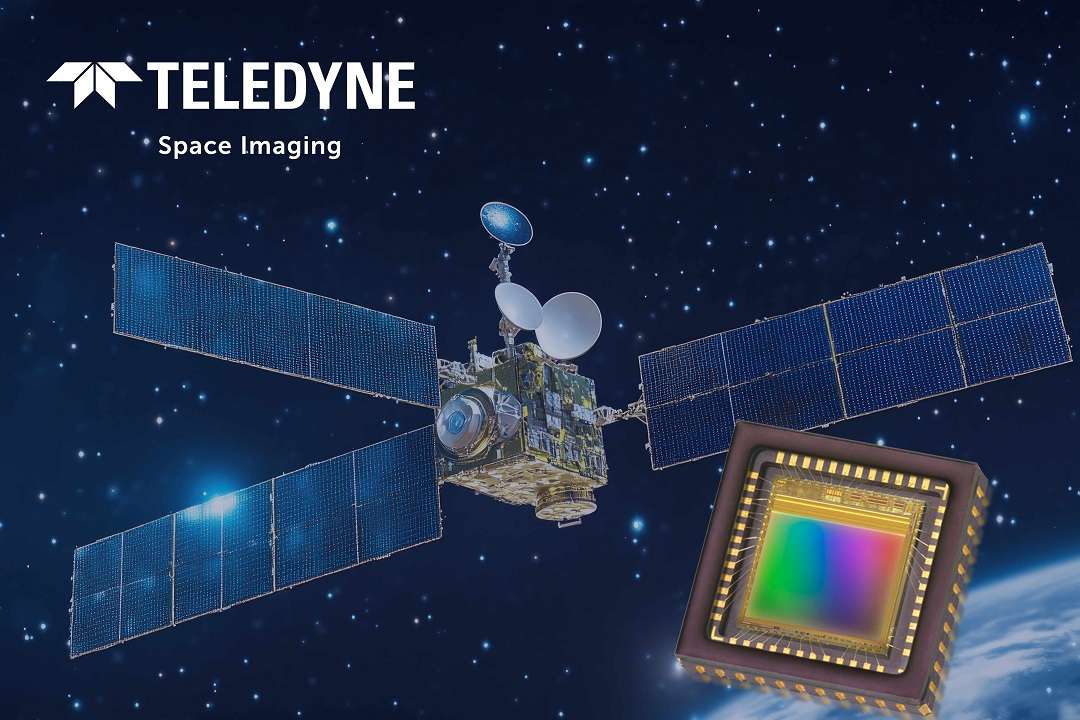Teledyne has introduced three new industrial-grade CMOS image sensors that have been screened and qualified for use in space environments. The devices, with resolutions from 1.3 to 67 megapixels, have undergone rigorous radiation testing and upscreening based on space qualification standards. Developed and manufactured in Grenoble, France, and Seville, Spain, these sensors are tailored for applications such as Earth observation, star tracking, onboard monitoring systems, and robotic vision in lunar and deep space missions.
Rather than relying solely on commercial off-the-shelf (COTS) components, which may fail under space conditions, these sensors are upscreened to deliver enhanced reliability. “We’ve made sure these sensors meet the requirements of space missions by validating them through targeted radiation tests and screening processes,” said Céline Semécas, Product Marketing Manager at Teledyne e2v.
Each of the new sensors undergoes full serialization, screening, and validation, including tests for single event latch-up (SEL), functional interrupts (SEFI), and other radiation-induced effects. Available with different levels of screening (U1 and U3), the sensors are delivered as flight-ready components, backed by test certificates and qualification documentation.
The Ruby 1.3M USV is a compact 1.3-megapixel image sensor optimized for space applications where size, weight, and power consumption are tightly constrained. Featuring a global shutter and 5.3µm pixel pitch, it comes in a space-saving CLCC package and is compatible with standard, low-cost 1/1.8” optics. Its low power draw makes it ideal for use in systems such as star trackers and spacecraft monitoring cameras, where efficiency and reliability are paramount.
The Emerald Gen2 12M USV offers 12 megapixels of resolution with a 2.8µm pixel size, delivering excellent image quality through its low readout noise—under 3 electrons. This sensor includes features like sub-sampling and multiple region-of-interest (ROI) support, making it flexible for different imaging requirements. Available with both LVDS and MIPI interfaces, it can also be tailored as an 8.9MP sensor, helping engineers design smaller optical systems without compromising performance—especially useful in high-contrast environments and compact payloads.
For applications requiring wide-area, high-resolution imaging, the Emerald 67M USV delivers 67 megapixels at a pixel pitch of 2.5µm. It supports rapid image capture with frame rates up to 65 fps at 10-bit depth and maintains low noise for clear imaging even in low-light conditions. Designed for Earth observation, space situational awareness, and multispectral imaging, it accommodates both color and monochrome outputs, making it well-suited to demanding remote sensing missions.
To simplify integration and accelerate development cycles, Teledyne provides comprehensive support tools, including evaluation kits, design references, and detailed radiation and qualification reports. “Our team in Grenoble works closely with engineers through every phase of development, from early design to mission deployment,” added Ms Semécas.
Teledyne also emphasizes long-term supply stability for space programs requiring extended product lifetimes and robust obsolescence management. Teledyne will showcase the capabilities of the Emerald Gen2 12M USV at booth 737 during SmallSat Europe 2025, to be held on May 27–28 at the RAI Convention Center in Amsterdam. Visitors can see a live demonstration and learn more about the company’s space imaging solutions.
Teledyne Space Imaging, which includes technology from Teledyne e2v, continues to support a wide range of mission-critical applications with imaging hardware built for extreme environments. These latest sensor variants extend Teledyne’s offering to meet the needs of both traditional and emerging space programs.







